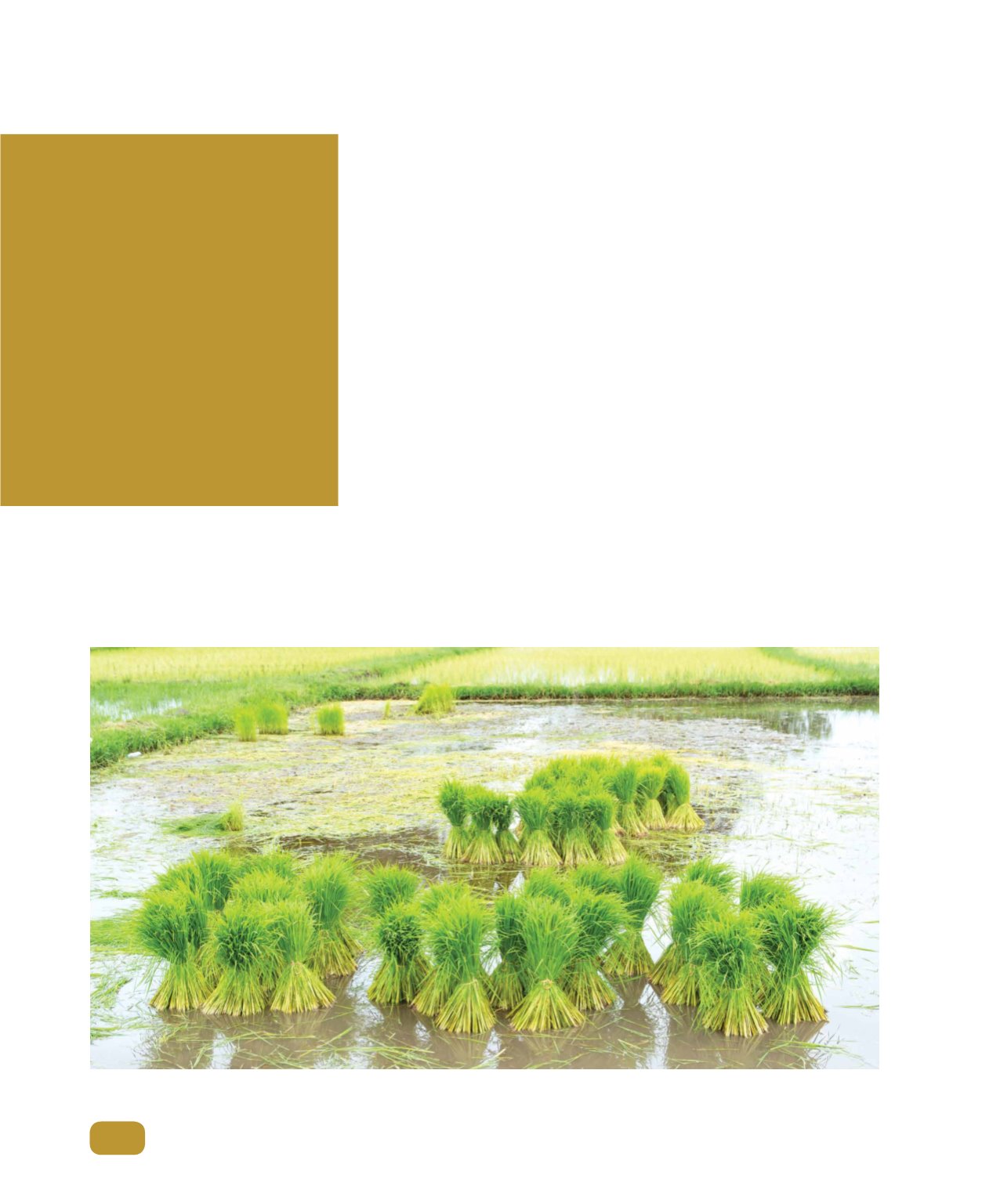

112
Borneo Bulletin Yearbook 2023
High-yield paddy
varieties
Developing high-yield paddy varieties
is a core strategy of the Department of
Agriculture and Agrifood to boost the
country’s rice production.
High-yield paddy
Titih
is a collaborative
project between the Department
of Agriculture and Agrifood, and
Singapore’s Sunland Agritech Pte Ltd,
with an average productivity yield of
six to eight metric tonnes per hectare
per season. It is potentially more
productive than previous varieties
such as
Laila
which has an average
production of three metric tonnes per
hectare per season.
In 2018, the
Sembada
188 hybrid from
Indonesia’s PT Biogene Plantation was
introduced with a yield of five to six
metric tonnes per hectare per season.
Sembada
188 underwent a series of
trials in Brunei since 2015 and was
tested alongside other variants. The
Sembada
188 was chosen based on
planting criteria, productivity level,
compatibility with local soil, and the
taste and texture of rice.
The Department of Agriculture and
Agrifood is working to identify more
high-yielding paddy varieties through
researchwith regional and international
institutions. A joint research project
with China’s Yuan Longping High-Tech
Agriculture Co Ltd, started in October
2021, is exploring varieties with a
potential yield of around 10 metric
tonnes per hectare per season.
High-yield paddy
Titih is a collaborative
project between
the Department
of Agriculture
and Agrifood, and
Singapore’s Sunland
Agritech Pte Ltd, with
an average productivity
yield of six to eight
metric tonnes per
hectare per season.









